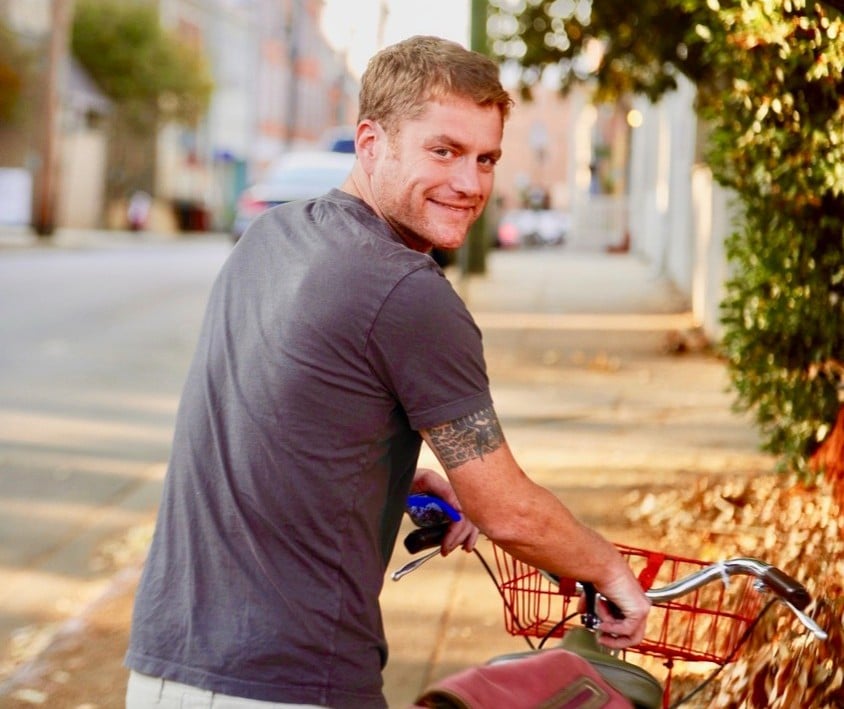[The following article is excerpted from two chapters of Cover My Dreams in Ink, the author’s account of the journey of her son, Paul Reithlinghshoefer, who lost his life, aged 34, to a heroin and fentanyl overdose in April 2017. As Filter reported, he had allegedly been kicked out of a treatment program for smoking.]
I don’t know where or how to begin. After all these years, I am baffled still. You might think reliving it, reading through my notes of the daily back-and forth communication, could provide some clarity. But the truth is, even in hindsight, there’s little about this experience that makes sense to me.
Paul was in the adolescent ward of a psychiatric hospital, which I didn’t see coming, and my focus was on understanding what to expect. Instead, I spent that first day and then some on the phone, trying to understand the insurance and knowing Paul’s treatment was at a standstill as a result.
“Is the hospital in the network? What about the doctor? Is the doctor in the network?” I was asked these questions and told this needed to be coordinated between the insurance provider—one office for the hospital and another for the doctor—and the hospital’s business office. Everyone I talked with gave me a different answer.
I was asked what I wanted. “I want the doctor to be in touch with Paul’s mental health providers in Hyattsville, Maryland,” I said.
But there is no doctor, I was told. “The business office is waiting on the insurance.”
“Get Regina to coordinate with Michelle,” somebody said. “No, it’s Sherry who handles that…”
“I’ve called them,” Sherry said, “but they haven’t called me back.”
I was told of two probable doctors. “It looks like Dr. Franklin is in the network,” Regina said. “But Dr. Spencer is in the same group as your Hyattsville doctors. He is more expensive though.”
“You need to get something in writing from the insurance company to give to the hospital,” another voice piped in.
“Dr. Franklin goes on leave in a few days, you better go with Dr. Spencer. Insurance will pay 80 percent of his daily fee,” Regina told me.
“What is his daily fee?” I asked.
“Not sure.”
I decided on Dr. Spencer before all this resolved. Even after I thought it resolved it wasn’t. In reality, it was never entirely resolved.
I asked if I could speak with the doctor, and was told he would call me after he had seen Paul. Reasonable, I thought. I was given the name of the social worker with whom I would meet twice a week. I learned visiting hours were in the evenings from 6:30 to 7:30.
We weren’t to be trusted; that’s how it felt, anyway. We were part of the problem, if not the whole problem.
Considering rush hour and getting through the inevitable Chesapeake Bay Bridge traffic, I allowed two hours to get there that first evening—I was rattled enough without being late. But as it turned out, I didn’t lose any time with Paul.
Visiting parents had been corralled but were still waiting. After my identification passed muster, and my pockets and handbag were duly inspected, I was herded with the others shoulder-to-shoulder on the crowded elevator, then through the double doors—unlocked to let us in and relocked behind us—into a common room where our loved ones were ushered in.
I was glad to see Paul’s face.
“I spent half the day in a room by myself, but I just talked with a doctor who is changing my medication,” Paul told me.
Before I could say anything, he continued, “How long am I going to be here? I’m worried about school.”
In what felt like mere minutes, it was time to go. I kissed him goodbye and we parents were herded out. We weren’t to be trusted; that’s how it felt, anyway. We were part of the problem, if not the whole problem.
The experience was humiliating. If it feels bad to me, I wondered, how does Paul feel?
Rehab
Paul was addicted to heroin. Through Paul’s housemates and their recovery community network, he learned of two facilities in Florida with dual diagnosis programs. One place—The Willough at Naples—had an immediate opening and he was admitted.
Paul called me from the treatment facility to tell me a few things. Our conversation started with this exchange.
Paul: “Did you see the guy I was talking to in the security line [at the airport]?”
Me: “Yes. I did.”
Paul: “I told him I was going into rehab. I also told him I was afraid of a mean dude, a dealer, who was after me for money and kept calling and threatening me.”
Why a sense of foreboding shot through me I can’t say. I was pretty sure the mean guy was in Maryland and Paul was in Florida.
Me: “Don’t pick up!”
Paul: “It’s okay now, Mom. I got rid of him. The guy I was talking to in line told me what to do. And it worked.”
Me: “What did you do?”
Paul: “The dealer guy called and I picked up and said, ‘I just got busted. The cops are going to take my phone. Here they come now. Don’t worry. I’ll delete your number.’ Then I hung up. He never called back.”
“I didn’t fit in. For me to stay, I would have to pretend to be someone I’m not.”
Paul told me he was taking Suboxone, a drug frequently used to treat opioid addiction and relieve symptoms of withdrawal as well as cravings, and Ativan, a benzodiazepine used to treat anxiety. Paul would be in the unit for 28 days. After that, a decision would be made about next steps. He told me about another program in the area that might offer a good transition.
By the end of Paul’s first month in treatment, the Suboxone was reduced from 8 mg to 1 mg. He was given the option to go into a long-term program nearby, which he decided to do.
I knew I wouldn’t hear from him for a while because such places do not allow the use of a personal cell phone and typically don’t permit any calls during the early weeks of adjustment.
So when the phone rang and I saw the call was from Paul’s cell phone—just a week after he’d entered the new program—it scared me.
“Hi Mom, I left the program. Don’t worry though. I’m going back to Willough … I can stay there another month and they were happy to take me back.”
“Why did you want to leave?”
“I tried to like it, Mom, but I didn’t fit in. For me to stay, I would have to pretend to be someone I’m not. It was too hard to do that and focus on my recovery too.”
Paul explained to me that the program’s emphasis on religion was overbearing. While spirituality was an important component of Paul’s life, he was repelled by anything he perceived as judgmental. In this case, he said there was no tolerance for differences. They promoted one way of thinking and behaving, which made Paul feel obliged to conform at the cost of “being real.”
With Paul’s need—often desperate—to connect with others, I could appreciate his feelings. In fact, I was impressed. Rather than go along—sacrificing his identity as he had done in so many settings in his life—he valued himself enough to go against the tide. And he did so in the name of authenticity, something he had learned was needed to make meaningful progress.
Photograph of Paul Reithlinghshoefer courtesy of Jessie Dunleavy.
Cover My Dreams in Ink was published in 2020 by Apprentice House Press. It is available on all book retail sites. For additional information: jessiedunleavy.com.






Show Comments